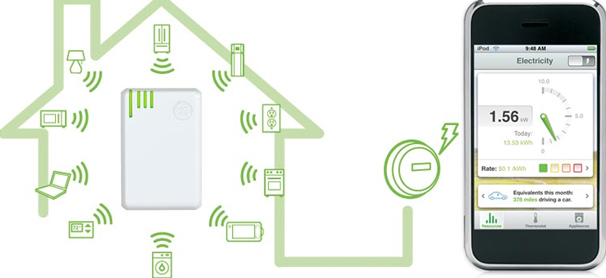'Smart Homes' Sneak Up on Homeowners

Most Americans won't move into brand-new energy-efficient "smart homes" immediately, but the technology could sneak into their humble abodes piece by piece over the next decade.
The smart home future creeps along because new U.S. homes make up just half a percent of the annual total of standing homes, according to Colin McCormick, a senior advisor at the U.S. Department of Energy. He and other experts cautioned that such technologies will only catch on if they allow homeowners to easily monitor and control their energy usage without confusion.
"There's an opportunity to act as the last mile of the smart grid and directly engage people in their lives with energy efficiency," McCormick said. "There's an opportunity to do things right, but also to do things wrong and build resentment."
McCormick spoke as moderator of a panel session at the ARPA-E Energy Innovation Summit in Washington, D.C., on March 2.
The key to a successful smart home is simplicity for homeowners, according to the panel members. But they added that homes must also have intelligent devices talking to one another behind the scenes and automatically adjusting the thermostat or appliance power modes.
Cold beers and warm showers
That future won't come cheap for now. Retrofitting a house with the latest smart meters, smart monitors and energy-efficient "green" technologies can cost $10,000 or more, said Matt Golden, co-founder and president of Recurve Inc. His company offers homeowners assessments about the energy savings that they can achieve by greening their houses.
Get the world’s most fascinating discoveries delivered straight to your inbox.
Homeowners want to know about the "comfort and soft benefits" of getting a smart home upgrade that enhances the homey experience of "cold beers and warm showers," Golden said. But they don't seem to spend much time "fiddling with the dials" on smart meters or monitors.
"When it comes to smart monitoring and smart metering, we've learned that simplicity is key," Golden explained. "Fancy thermostats with big screens tend not to make people happier."
Golden envisions a future where companies sell smart home service plans that guarantee a certain energy bill for customers.
For now, many people may not bother to program their ordinary thermostats, said David McCalpin, general manger of home energy at GE Appliances. GE used that as starting point to create a program that allows people to control their thermostats from their computers, tablets and smartphones.
Innovation without permission
But even smart thermostats that lack connections to household sensors and appliances will act like dumb thermostats, according to Seth Frader-Thompson, co-founder and CEO of EnergyHub, Inc. The devices, he added, must have a common network to talk with one another.
Such a network could even make all the energy management data available for anyone who wants to write an app for it — not unlike the crowd-sourced apps created for smartphone platforms such as Android or the iPhone. That openness would allow for "innovation without permission," Frader-Thompson suggested.
"The best you can do is to create open data systems where consumers can pluck and choose," Frader-Thompson told the panel audience. "We need something like that for smart grids to allow vendors and even individual consumers to tap into the data."
Allowing for common communication among smart devices would also help usher in the era of smart homes — and smart cities —by making it easier for sensors or appliances made by different companies to interact. But a host of incompatible devices could stall smart homes.
"At the end of the day, the industry is not taking off if consumers are fighting through a bunch of different standards," McCalpin warned.
The social network for machines
A well-tuned suite of smart devices sharing the same network should be able to automatically respond to changing conditions inside and outside a house, according to J. Stephan Dolezalek, managing director for VantagePoint Venture Partners.
"On an individual basis, we're unlikely to solve the problem," Dolezalek said. "What we're focused on is the social network of intelligent machines."
Furthermore, utility companies that supply our energy "may be last in line" to manage such a smart home network, Dolezalek said. Instead, companies such as GE Appliances, Best Buy, or even telecommunication firms like Comcast and AT&T may dominate the field.
Children are the future
Regardless of who supplies the smart home technology, parents may be surprised by who takes charge in their smart home.
"What we discovered is that it's the kids in the household who actually become the energy managers," Dolezalek said.
Some venture capitalists had previously toyed with the idea of taking the value of wasted energy out of their kids' allowances, according to Frader-Thompson. But they too found that the kids ended up teaching the parents about energy management.
McCalpin of GE recalled telling his son to keep the household's energy usage below a certain level while he was gone on a business trip. When he called his wife in the evening to check in, she began laughing.
"You're going to find this funny, but [your son] turned off the lights and I'm sitting in the dark," she said.



